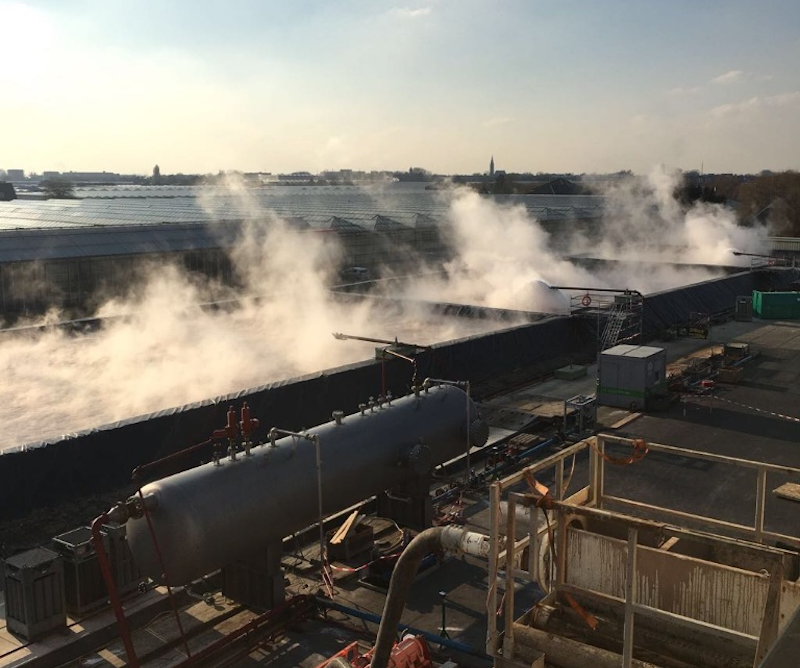Trias Westland geothermal project successfully concludes production tests, Netherlands
The Trias Westland geothermal heating project has successfully concluded production tests of a well drilled for the project aimed at providing heat to local companies, mostly in greenhouse operations.
Last week, Dutch Trias Westland reported that it has successfully concluded the production test in the Lower Cretaceous Reservoir. In addition, water was pumped 2.3 kilometers deep upwards. The test went very well. The hot water flowed very smoothly into the basin and the gas in the water flared off. Samples have been taken and measurements have been taken to include pressure and temperature. With this information the project team can start with the realization of the heat network. The exact power of the geothermal doublet becomes clear at the end of April, when the second well is also drilled and tested.
In Mid-February the decision was made: Trias Westland will realize a geothermal project at a depth of 2.3 kilometers. This is the Lower Cretaceous layer, from which also the other Westland geothermal projects extract their heat. The Triassic layer, at a depth of 4 kilometers, turned out not to be suitable for cost-effective heat recovery at this location. The layer above – the Lower Cretaceous layer, or more specifically the Delft Sandstone layer- turned out to be very suitable for the production of hot water.
The permeability of the Triassic layer is by far not sufficient to pump water upwards. According to project manager Floris Veeger water flow is almost impossible in this rock. In addition, traces of gas have been found, which make a production test very complex. These factors led to the decision to leave the Triassic layer. The lower part of the pit has been closed off with concrete plugs. In the third section the casing perforations have been made through which the water can flow.
Although Trias Westland would haved to realized a Triassic project, the greenhouse horticulture companies and shareholders are positive about the possibilities offered by the Lower Creatceous layer for the utilization of sustainable heat. Director Marco van Soerland: Previous measurements had already shown that this layer is very permeable and the production test went very well. We estimate that we can connect about thirty companies to this geothermal doublet. In addition, Trias Westland will investigate the possibilities for a second geothermal source. Which companies will be the first to be connected, will be determined by the location of the companies and the number of customers in the neighborhood.
T&A Survey has been involved in the Trias Westland project from the outset and now provides the drilling management.
The test drilling of Trias Westland is a unique geothermal heat project. Never before in the Netherlands was drilled to a depth of 4 kilometers for the extraction of geothermal energy. Experts disagree about the extent to which geothermal heat is economically feasible at that depth. There are a lot of geological data available in the Netherlands because of the many oil and gas drilling. These, however, often relate to a depth of about3 km. A test drilling is therefore the only possibility to obtain hard data about the potential of the Triassic.
The exploratory drilling is accompanied by an extensive research program that should provide a good picture of the geothermal quality of the Trias reservoir and the Cretaceous. Based on this, Trias projects can be realized elsewhere and the Undercrack project can be optimized. Trias Westland therefore works closely with geological advisers and knowledge institutes.
About 49 different companies in Westland are participating in this project having signed a letter of intent for the purchase of geothermal energy from Trias WEstland.
Source: Trias Westland, TA Survey


















